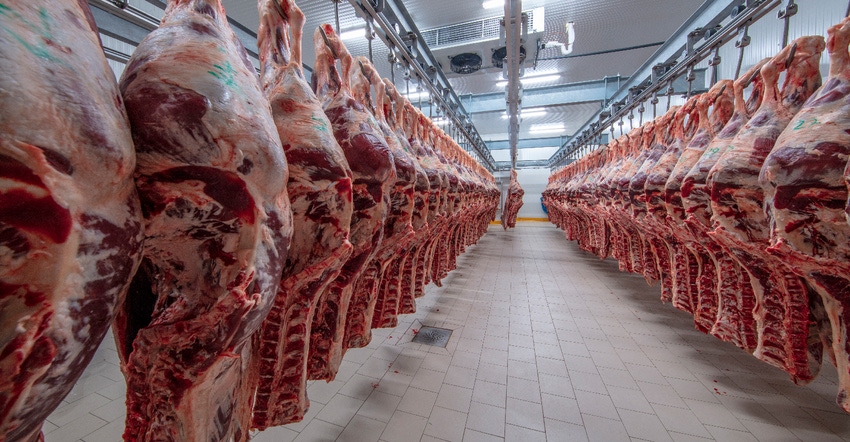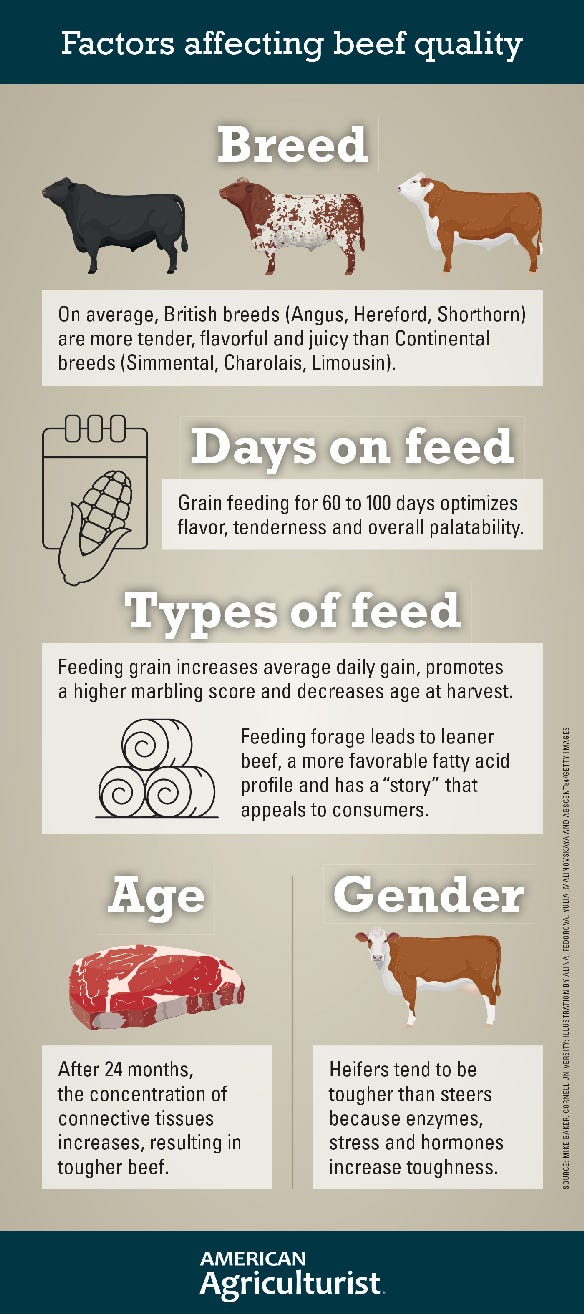
I received a question recently about whether the time of year has any effect on nutritional quality of beef. Searching the literature, I found that there has not been a lot of work done in this area. What I did find, though, was that when looking at beneficial fatty acids, any environmental or production factor that reduces fat deposition will reduce the beneficial fatty acid profile.
Therefore, in cold environments, nutritional quality of beef improves in the summer, whereas in tropical environments, the winter (cooler) season produces better nutritional quality.
Environmental stress, which reduces intake, or nutritional stress due to lack of dietary energy to meet requirements of cold temperatures, was the cause of lower nutritional quality.
What I was not able to find is, if cattle were not undergoing nutritional stress, would the resulting beef be of similar quality? I will keep looking into it, but it’s safe to say that the less stress your cattle experience, the better the nutritional quality.
The good news is that you have control over this: Provide shade in the summer; provide protection and high-quality forage in the winter.

Here is a review of the factors that affect beef quality. This is a short list as entire semesters are taught on this topic:
Breed. On average, the British breeds (Angus, Hereford, Shorthorn) are more tender, flavorful and juicy than Continental breeds (Simmental, Charolais, Limousin).
Days on feed. Grain feeding for 60 to 100 days optimizes flavor, tenderness and overall palatability.
Types of feed. Feeding grain or forage provide very different benefits. Here are some of the benefits of grain:
• increases average daily gain, which increases fat deposition
• promotes a higher marbling score that correlates to positive consumer acceptance
• decreases age at harvest, which directly correlates to tender beef
Here are some of the benefits of forage:
• Lower energy content leading to about 20% more time on feed. However, when slaughtered at the same level of backfat, there was no difference in tenderness between grass and grain-finished steers.
• Leaner beef. However, producers need to be sure to have at least 0.25 inches of backfat at harvest. If not, the carcass will chill too fast, and the beef will be tough.
• More favorable fatty acid profile. But absolute intake is similar to grain-finished beef.
• Intensification of flavor profile.
• Has a “story” that appeals to consumers (environment, animal welfare, nutrition, sustainability).
Age. After 24 months of age, the concentration of connective tissues increases, resulting in tougher beef.
Gender. Heifers tend to be tougher than steers. Even though heifers tend to marble at an earlier age, enzymes, stress and hormones increase toughness.
The enzyme that slows the rate of tenderization in the muscle is higher in heifers as compared to steers, resulting in tougher beef.
Heifers are more temperamental, which increases stress. Before harvest, stress causes a chemical reaction in the tissue, increasing toughness and pH. An increase in pH promotes the incidence of dark lean meat, known as dark cutters. Dark cutters decrease consumer acceptance.
There also is some limited data that shows that as heifers have higher circulating estrogen levels, this will decrease tenderness.
Quality grade. This is measured as the amount of intramuscular fat or marbling. A higher degree of marbling is associated with increased consumer acceptance. Minimal marbling should be High Select.
Aging. To optimize tenderness, carcasses should age at least 10 days prior to being processed. Aging has the greatest effect on the middle meats, but it is impractical to age them separately from the rest of the carcass. Beef that is not aged has shorter muscle fibers, which leads to tough beef. Beef can be aged hanging in a cooler or packaged, known as wet aging.
Tenderness and juiciness used to be the prime driver of consumer satisfaction. However, due to increased genetic pressure on increasing tenderness as well as branded programs to identify tough beef, tenderness has declined in importance.
New evidence suggests that flavor is a new driver, along with the stories behind the beef.
Baker is a senior Extension associate in the Cornell Department of Animal Science.
About the Author(s)
You May Also Like






